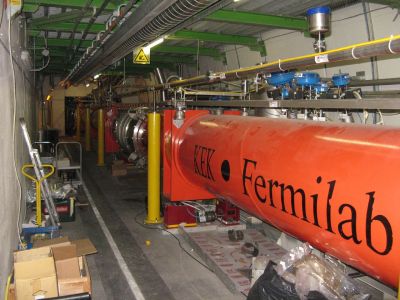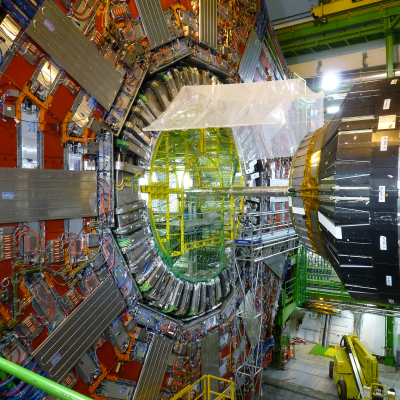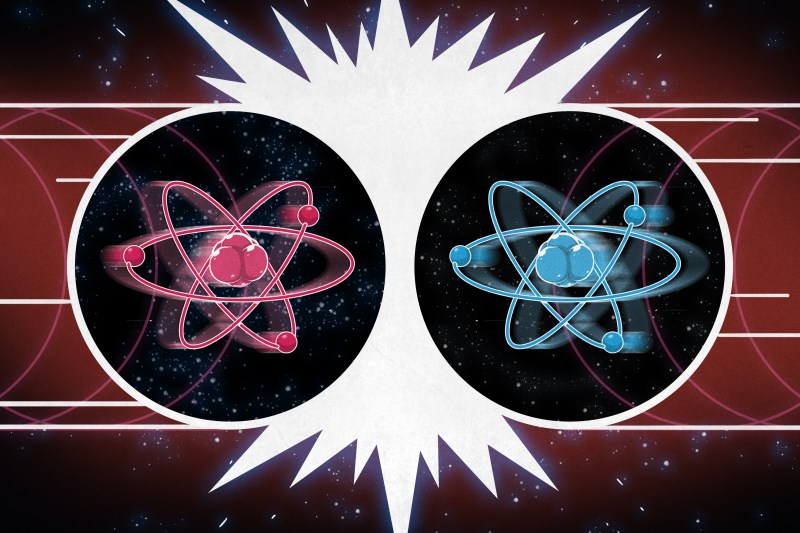Energy prices have been in the news more often than not lately, as has war. The two typically go together, as conflicts tend to impact on the supply and trade of fossil fuels.
With Europe short on gas and its citizens contemplating a cold winter, science is feeling the pinch, too. CERN has elected to shut down the Large Hadron Collider early to save electricity.
Bill Shock
With Europe facing a dire situation this winter, CERN has agreed to a request from Électricité de France (EDF) to cut its electricity use going forward. The laboratory will cut back on its energy consumption for the rest of 2022 and into 2023 to help ease the load on France’s electrical grid.
The governing council of CERN ratified the plan on September 26. In 2022, CERN will close its operations two weeks early to help cut demand, calling a technical stop on 28 November. It will also scale back operations by 20% for 2023. This will primarily be achieved by closing four weeks early next year, stopping operations some time in mid-November. Start dates for CERN’s operations will remain the same in 2023 and 2024, with the lab getting major work underway again as scheduled in late February.

As a high-energy physics lab, CERN racks up significant energy bills even in a regular year. The lion’s share comes from the organization’s crown jewel, the Large Hadron Collider (LHC) and cools the particle accelerator’s superconducting magnets, which operate at a temperature of -271°C. To maintain that temperature, the LHC relies upon a 27-megawatt liquid helium cooling system. As it turns out, doing high-energy physics has high energy requirements. CERN draws around 200 megawatts during peak consumption periods, but this drops to just 80 megawatts during the quieter winter months.
In a typical year of normal operations, CERN uses around 1.3 terawatt-hours of electricity. As a comparison, the city of Geneva has a population of 200,000 people, and consumes 3 terawatt-hours per annum. Its electricity bill for 2022 is estimated to be around $89 million.
Cutting back on active research time will help save energy. However, a 20% cut to operational time won’t result in a 20% drop in energy use, due to maintenance requirements. For example, the LHC’s superconducting magnets must be kept cool, even when not in use.
CERN isn’t just cutting back on science to reduce its energy consumption. It will also take conventional measures, as well. On the lab’s campus, night time street lighting will be switched off where possible, and heating will be used one less week per year.

According to CERN, the decision to wind back operations hasn’t been made primarily over spiralling energy costs. Instead, measures are being taken out of concern for broader society. Much of Europe relies on natural gas for heating and electricity generation. With Russia continuing to wage war on Ukraine, those supplies are scarce. Fears abound over the coming winter, rolling blackouts, and potential supply shortages. Thus, the aim is to ensure that sufficient fuel resources are available to allow for crucial heating and electrical needs in people’s homes.
The early shutdown will mean that some experiments will no longer take place as scheduled. Those scientists who intended to use CERN’s facilities in the last two weeks of operations will instead be rescheduled for 2023. That also means there will be more competition for time on the facilities next year, in addition to the impacts of the further-reduced 2023 schedule.
Other science facilities are feeling the bite too, and some are more cost-sensitive than CERN. The German Electron Synchrotron has contracts that cover parts of its energy bill years in advance to avoid spikes. While 80% of the synchrotron’s bill is covered for 2023, the last 20% is still up in the air. At current prices, the organization cannot currently afford to cover the expense. Management is pursuing additional government funding, and exploring running some of its hardware at lower power settings as a compromise.
Much of CERN’s work is high-concept physics that doesn’t have a huge impact on our lives today. However, the research done there is the very sharpest of the cutting-edge, and is of profound value to humanity. For now, though, it is the prudent and noble thing to do to wind back operations as Europe faces a cold and uncertain winter ahead.

















This seems to add very little info beyond what was already in the Hackaday Links roundup, October 23. Is there new news to add?
Kind of sad to see the CERN PR department pushing this on the war and energy crisis. The actual reason for all this turmoil is that for a very long time CERN had preferential, highly subsidies, prices from EDF. This is endings and CERN will now have to pay its bills full price.
You can see here https://www.fournisseurs-electricite.com/guides/prix/mwh-electricite that the price of the MWh in France in 2018 was 353E. When, for the period, CERN was paying 48ME for 1250GWh.
https://meroli.web.cern.ch/img/blog/cern_el_el.png#.Y2TeQpJVBwk.link
I would expect a 27MW cooling system to have to dump more than 27MW of energy of heat somewhere, that’s 236GWH or enough to heat 31000 modest houses.
Yep, and a waste heat system is being built to use this resource. I live in the small town that will use the heat.
“With Russia continuing to wage war on Ukraine, those supplies are scarce”
Indeed.
https://youtu.be/V6nkq9xlPl0
Except France does not produce electricity from LNG, only very marginally, but from atom fission. And many homes have electric heating. And many of the nuclear power plants are now in maintenance (needed, planned well before the war).
Still. Could have be worse, we´re lucky it´s not Pacific Electric running the EU grid.
Indeed.
France doesn’t, but it buys power from neighboring countries who do.
France is a net exporter, but because it’s more economical to run nuclear power at steady power it is doing the whole input/output dance where it is putting out a surplus in the summer and buying power back in the winter.
So the LHC is like a massive vacuum tube bent round in a circle… have they thought of replacing it with a transistor version? ;-)
Yeah, but they’re one of those entirely analog signal path types…
I’m surprised they don’t have their own dedicated nuclear reactors. They could recycle the waste heat and excess electricity back into the grid.
I’m guessing that having a nuclear power plant on the site might have them wondering if their readings are from the beamline or stray particles from the reactor.
Reactors have more than enough shielding to prevent that and this thing is deep underground which adds enough shielding that you probably wouldn’t even notice a nuke going off above ground
No shielding is going to have an appreciable effect on some subatomic particles of interest (e.g. Neutrinos) emitted by reactors. There, the best method for reduction is the good old inverse-square law: keep sources far away.
“On the lab’s campus, night time street lighting will be switched off where possible”. Good idea, but I doubt it will make any measurable dent in the 1.3TWh/year figure (approx 150MW average)
Its the thought that counts :-)
Same as banning regular lightbulbs from private homes. Lighting was about 15% of the typical demand, and households were about 15% of the total grid load…
True, but in an ideal world we’d also be saving a bunch on manufacturing / transportation of replacement bulbs.
Unfortunately, consumer LEDs are almost universally over-driven and under-cooled, so they only last a fraction as long as they could in theory.
And we had a rebound effect where people installed more lights and left them on all the time because they were cheaper to run (and CFLs took a long time to warm up), so the actual savings were close to nothing anyways.
There’s 5x as much material in a LED bulb, but it doesn’t actually last 5x as long, so the manufacturing losses didn’t get any better either. Instead, light bulbs became e-waste that is hard to dispose of rather than having just brass and glass and a tiny bit of tungsten.
Are you complaining about having superior light bulbs?
I’m glad to not have 1kW dissipated as heat in my house because of all the light bulbs, during summer.
Nobody forced you to use incandescent bulbs in the first place.
I’m complaining about not having the superior _light_ anymore.
Maybe they can run info.cern.ch off a Rasberry Pi too.
So, they have massive cooling requirements, and to save energy, they are cutting back during the coldest part of the year. Makes perfect sense to me.
The LHC is entirely underground (175 m) and will have an influx of heat entirely decoupled from the seasons (and it is in a human-accessible tunnel). Having to supercool magnets from say 293K or 303K won’t make much of a difference energywise. France and Switzerland have a climate where winter heating takes more energy than summer cooling, and many houses are heated by electricity — abundant due to nuclear energy (FR) and hydropower (CH).
This is why they want to save energy more in the coldesr season.
Terawatt-hours is not an SI standard – nor should it be.
no, but Petajoule sounds a lot worse and hardly anybody could put it into context.
Agree
So what’s wrong with “football fields filled with batteries”?
It’s not as convenient as elephants up and down Mt. Everest.
Hannibal found out otherwise.
B^)
Nah, that was the Alps. There’s a conversion factor of about 1.8.
Point being that it’s very nearly 100 MWh per elephant up the Mt. Everest.
Sorry, 100 kWh per elephant.
Don’t you mean “Olympic sized swimming pools” filled with batteries?
B^)
So does this mean that Europe will only be able to collide small hadrons now?
France is a part of Europe.
Um that’s not exactly correct about how they keep it cool. They use a combination of cooling towers and geothermal vaults, as well as the liquid gases.
“At CERN, many systems and installations (cryogenics, electronics, ventilation, etc.) are cooled using water: cold water is injected into the cooling circuit and the hot water produced is then collected and cooled by cooling towers, before being reinjected into the circuit,” says Serge Claudet, CERN’s energy coordinator. “The hot water leaving the circuit can reach a temperature of 30° C (86° F), which is very useful in the context of energy recovery.”
https://home.cern/news/news/engineering/lhcs-cooling-system-energy-source-cerns-neighbours
Doesn’t CERN make Anti-matter? They have the best batteries already!
Currently all the antimatter produced at CERN is purchased by the Romulans, and they won’t appreciate any cutbacks of their supply.
AFAIK they get most electricity from water in Switzerland don’t they? The problem though is that the politicians/industry insist on keeping prices coupled, electricity from natural sources to the ones from gas generators, and the gas price is coupled to the oil price.. but only if it is higher that way I notice, not if oil is in a slump.
Anyway, selected people are getting rich and that is what is (seemingly) important. Oh and the self-destruction of Europe, that is important too. Don’t ask me why. (I have thoughts on why, but there is no wisdom in sharing those in this climate).
There’s several parallel markets for electricity. One for long term contracts (PPAs), another for the day-ahead market, and a third for the spot market which is traded on a minute-by-minute basis.
Large industrial users and electricity retailers buy the bulk of their energy by a Power Purchasing Agreement, which is a long term bulk contract at a fixed price. The day-ahead market deals with the difference between the long-term purchase agreement and the real demand, and then finally the spot market handles the actual and immediate power balance.
The day-ahead and spot markets have the highest prices and largest price swings, because things happen too fast to plan ahead. There you get the big windfall profits, because producers don’t have long term contracts – they can adjust their prices to match the marginal cost (the most expensive producer) needed to meet the actual demand. However, this is only a part of the retail price of electricity to the end consumer.
What’s been happening recently is, the market for electricity has been “opened to competition” by separating the grid infrastructure and producers from the electricity sellers in such a way that anyone can buy and sell energy and transmission capacity as if on a stock exchange without owning or operating any actual hardware. This has flooded the system with “market rate” consumer contracts which promised cheaper prices but actually pushed the marginal cost directly onto the consumers.
I would bet that the Swiss are sell a lot of that power to other nations to help out with the lack of NG. Add in the fact that even more people are probably shifting to electric heat since NG is getting harder to come by. Add in the fact that a lot of the EU have moved away from nuclear to NG and solar it is just a real shortage of power. Solar does not work well in winter. I know that PVs work best when it is cold but they do use light to make power. Winter days are shorter, in many places in the EU they are cloudy, and snow… Until you can clean it or melt it you have an issue. For the EU the off shore wind farms seem like a better idea. Solar may still be a good idea around the Med.
I am not anti solar at all. I live in South FL and we have lots of it going in but here heating loads tend to be pretty low with cooling loads being the big problem. Add in the winter is our dry season so we tend to have clear skies in winter it works out pretty well. In fact in the county I live all of our power production is from Solar or Nuclear. Out electric grid is very low carbon output.
The average coefficient of production, otherwise known as capacity factor, of solar power in northern Germany is somewhere between 5-10% of the nominal installed capacity. It makes absolutely no sense whatsoever – it exists simply because it’s been subsidized to happen.
It exceeds the grid demand in the summer when it is not needed, and completely vanishes in the winter when it would be needed.
https://installoffgridsolarsystem.com/wp-content/uploads/2017/02/Solargis-Europe-GHI-solar-resource-map-en.png
Basically, solar power anywhere north of Italy is just a subsidy game – it makes more money for the industry than energy for the consumers.
Compared to North America, solar power in most of the EU is similar to Canada.
https://installoffgridsolarsystem.com/wp-content/uploads/2017/02/Solargis-North-America-GHI-solar-resource-map-en.png
Why doesn’t the LHC generated its own power seems like a machine that so Advanced would be able to generate and some power or wouldn’t be relying on taking power from peasant in order to supply it to the machine
Even if it could make enough power to run full time I would think that they would probably be doing the same thing. Why? To keep people in the EU warm. I mean the mysteries of the Universe will still be around next summer.